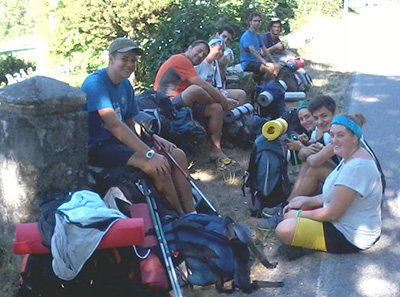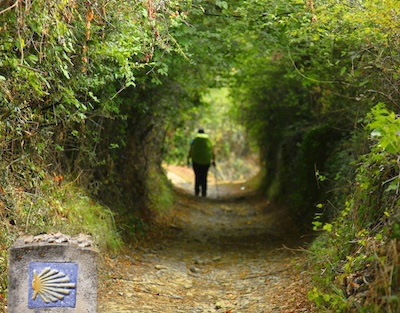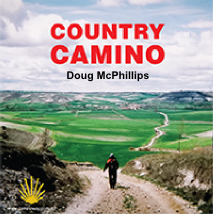Tips for Walkers
 Albergue, hotels and private rooms.
Albergue, hotels and private rooms.
If you're planning to sleep out then a light weight tent, camping stove, a pot and utensils are essentials too. I did carry a tent for the first 300 km but finally sent it by post to Santiago to reduce weight. A tent, unless you prefer this type of a stay, is unnecessary on the Camino as accommodation is cheap.
There is no shortage of "Albergues" (hostel, lodging or refuge) along the way to Santiago. The basic and most popular "Municipal", which means your stay is a unspecified donation to the "Parochial" accommodation which is run by church organizations to "Associated "which are operated by national Camino organizations. There is of course private accommodations and hotels which can be booked through travel agents, on the web or via information centers on The Way.
Food also is cheap but if you plan to cook your own evening meal it's advisable to bring your own cooking pot and utensils as some Albergue do not provide them despite the fact that most have the convenience of a kitchen.
Water Refill locations
All villages on the Camino have fountains in the central square to fill water bottles. So whilst it is advisable to carry a couple of liters for your journey, you will be able to refill frequently on your daily trekking. Reliable water refill sites are marked on stage maps. Tap water is marked as drinkable (potable) or untreated (no potable).
It is possible to purify none drinkable water with 5 - 7 drops of iodine per litre and leave for 20 minutes before drinking. The iodine is also a great germ killer and healing agent for blisters! Doctors advise is also advisable before using my iodine method of purifying untreated water, particularly if you have thyroid problems.
Bottled water is also available at cafes and bars along the Camino but take care to recycle plastic bottles.

Dehydration
Dehydration in extreme heat is common on the Camino resulting in fatigue,headaches, heat stroke and even death. Electrolytes such as Gatorade (Aquarius in Spanish) should be consumed if dehydration occurs. It is a good idea to mix electrolytes in your water just in case and ensure you eat foods that help replenish electrolytes such as banana (potassium) and eat salty foods to aid muscle recovery. Take frequent breaks, cool feet in water or use a wet towel until you feel better.
Blisters
The most common injury on the Camino is caused by blisters. They can be extremely painful and can easily get infected. If blisters form, some pilgrims use a sterilized needle to puncture the edge of the skin and drain using sterile material from your medical kit. I do not subscribe to that method but rather apply a drop of iodine to the broken or unbroken blister and apply tape directly over the blister. It acts as a second skin and pain goes away. By the time plaster wears off feet are back to normal. It depends how long you have left them before using this method so If blisters become red or infected over a couple of days, visit a doctor for antibiotics.
Prevention is better than cure so ensure you have properly fitted boots or heavy duty sneakers broken in before commencing The Way. Light woolen socks and liners are always advisable. Also if you begin to develop blisters, take frequent breaks, cool feet and keep them dry and wash feet and socks daily! Most importantly, massage your feet with Vaseline (petroleum Jelly) before start each day. Fair chance then you wont get a blister.
If you develop dry and cracked feet use a pumice stone or callous shaver purchased from pharmacies. Use soap, water and antiseptic to help prevent cracking.
We provide medical kits and creams to assist you on your Camino journey. See our products page.
Click here for fitness tips for walkers

website: www.CaminoWay.com.au - email: pilgrim@caminoway.com.au
All material on this website is copyright © website by: www.thenet.com.au | Privacy Policy


